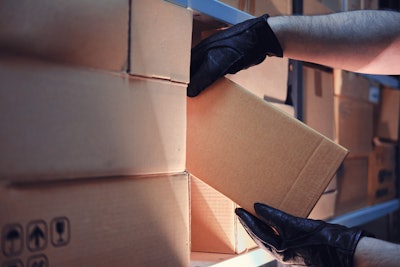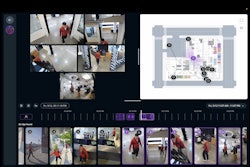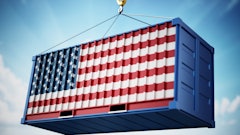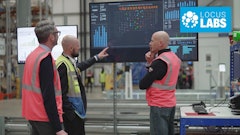
Modern supply chains are built for speed, scale, and global reach, but that very complexity has exposed vulnerabilities that traditional security measures can’t keep up with. At the center of this growing concern is cargo theft: a crisis hiding in plain sight, quietly siphoning billions from the industry every year.
And it’s not just about lost products. Each incident sets off a chain of consequences, missed deliveries, customer dissatisfaction, insurance battles, and reputational damage. Yet despite the increasing scale of the problem, many companies are still responding with outdated playbooks.
A growing, shifting problem
Cargo theft is no longer limited to organized heists at unsecured truck stops. It’s shifting, evolving. Today’s thieves are adapting faster than the industry is. In some cases, they’re exploiting gaps in digital systems. In others, they’re targeting soft points in last-mile delivery, using insider information, or manipulating shipment documentation.
Recent industry data shows a 26% rise in incidents year-over-year, with nearly 3,800 reported cases in 2024 alone. These range from thefts of high-end sneakers from freight trains to sophisticated schemes involving stolen carrier identities. So-called “strategic theft,” where criminals impersonate legitimate freight entities via hacked registries or stolen credentials, now accounts for roughly one-third of all incidents.
One of the most striking shifts has come from attacks on freight rail: organized groups hijack shipments worth millions, targeting trains in remote areas, employing scouts, cutting air hoses, and using follow vehicles to streamline their operations. Such activity cost major U.S. railroads over $100 million in 2024 alone. These trends clearly indicate that cargo theft is not slowing, it’s growing more daring and structured.
Why traditional security falls short
Many supply chains still rely on physical seals, locks, manual logs, and static security protocols. But these tools weren’t built for today’s environment, where high-value goods change hands rapidly across multiple partners, and where visibility into each stage is essential.
Surveillance cameras, perimeter checks, and GPS tracking all help, but they work best as part of a larger, connected strategy. Fragmented systems leave room for error. Static documentation doesn’t tell the full story of what happened, when, or how. And when theft does occur, it's often difficult to prove exactly where the breakdown took place.
This lack of traceability hurts not just operations. But relationships with customers and partners who expect timely, secure, and accurate deliveries.
The innovation gap
Solving the cargo theft crisis isn’t about one-time fixes. It’s about closing the visibility gap that exists between facilities, drivers, and delivery points. That’s where innovation must step in, not just through new tools, but through smarter processes and better alignment across the supply chain.
Newer approaches are starting to show promise. For instance, high-resolution image documentation at each handoff point helps establish a chain of custody. When paired with digital time stamps and integration into WMS or TMS platforms, these visual records provide defensible proof in the event of a claim or dispute.
Beyond images, data-driven alerts based on shipment irregularities can flag high-risk scenarios in real time, whether it's a door opening outside of a geofenced area or a delay that doesn’t match the route plan. But these tools only work when systems communicate, and when there’s a culture of accountability throughout the supply chain.
One of the reasons cargo theft persists is that it thrives in areas with low transparency. When there’s no clear record of what condition a shipment was in when it left the warehouse, or when it arrived at its destination, everyone involved is left guessing. Disputes become long, drawn-out processes, and even if claims are eventually settled, time and trust are lost.
The future lies in real-time evidence, not just tracking where something is, but showing what it looked like at every key checkpoint. This kind of visibility doesn’t just deter theft; it shortens investigations, resolves disputes faster, and helps recover losses more effectively.
More than tech, a shift in mindset
Innovation doesn’t start with software. It starts with questions:
● Can we prove what condition this shipment left in?
● If something goes missing, do we know where it happened?
● Are all stakeholders, from carriers to warehouse teams, on the same page when it comes to documentation and accountability?
Technology can answer these questions, but only if organizations are ready to ask them first.
More leaders are beginning to rethink their approach, recognizing that visibility is no longer a “nice to have;” it’s the foundation of resilience. They’re investing in connected tools that make every shipment traceable and every handoff documented. And they’re building processes around those tools to ensure adoption across teams and partners.
Cargo theft isn’t just a disruption; it’s a direct challenge to trust, performance, and accountability across the supply chain. And yet, many organizations continue to operate with limited visibility and outdated processes that make it nearly impossible to prevent, investigate, or resolve losses with confidence. Relying on reactive measures or fragmented documentation leaves too much room for doubt, and in today’s high-pressure environment, doubt is a cost few can afford.
True security isn’t about reacting, it’s about being ready, with a supply chain that can prove its integrity every step of the way.
So, what is the solution to this problem?
Mobile devices are changing the way these problems are addressed. The use of mobile-based photo and video documentation is an important area of rapid innovation that is turning into a proven solution.
These systems capture the condition and content of each shipment before it leaves the dock. With an easy scan of a unique code on the shipping carton, warehouse teams can prepare shipments with time stamps and geo-tagged images and videos that show precisely what was packed and how it was sealed to specification.
Data is uploaded to a secure cloud portal where it can then be searched and retrieved by shipment ID, customer name, or carrier name. For the packaging teams, this creates a direct link between how a product was packed and how it was received. This innovation is bridging the gap that often leads to costly disputes and chargebacks.
A byproduct of photo capturing the condition of all shipments is raising the work profile and standards of everyone in the warehouse and supply chain when they understand the quality of their work can be directly tied to the condition of all shipments. The rising tide lifts all boats.



















